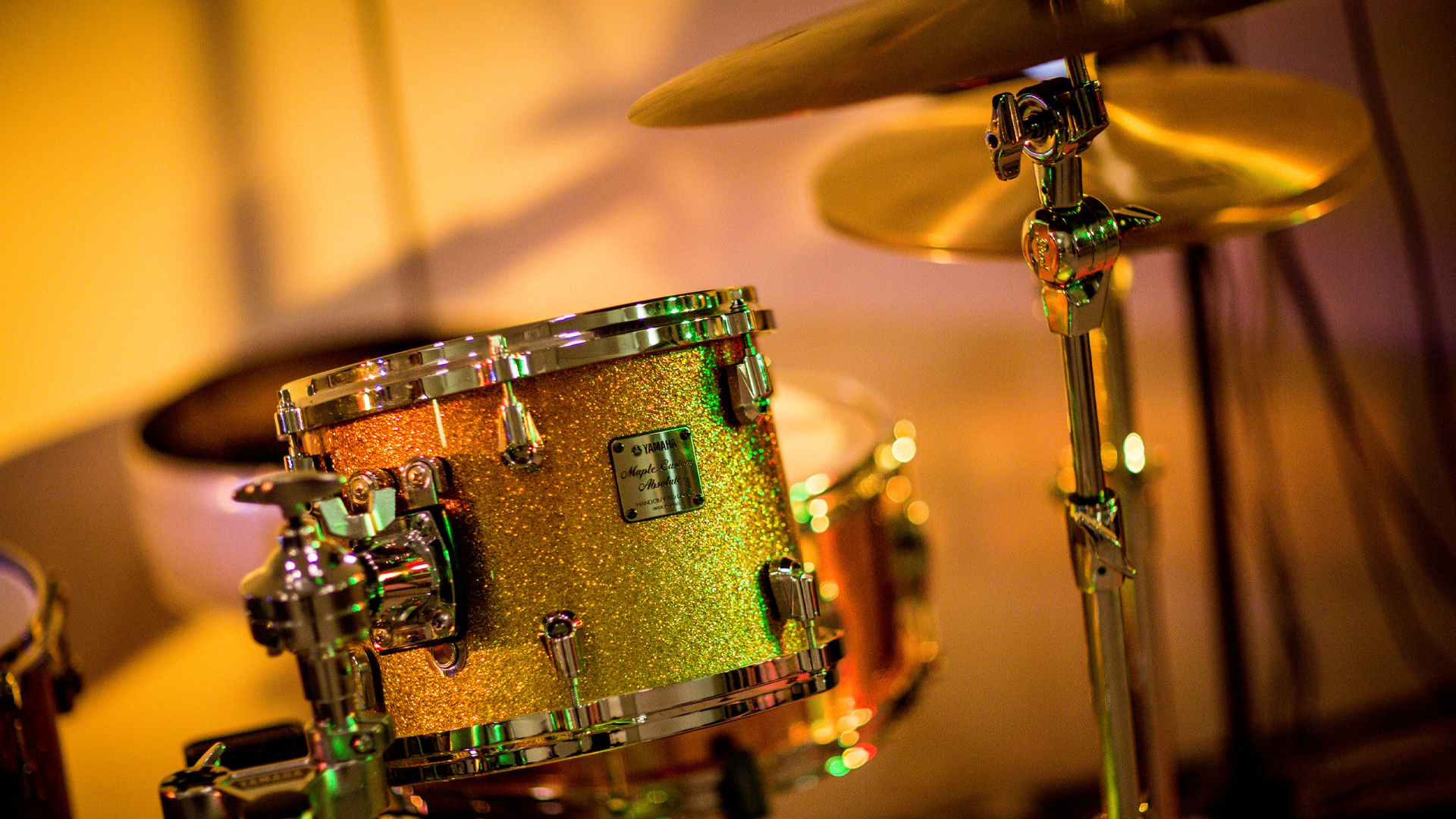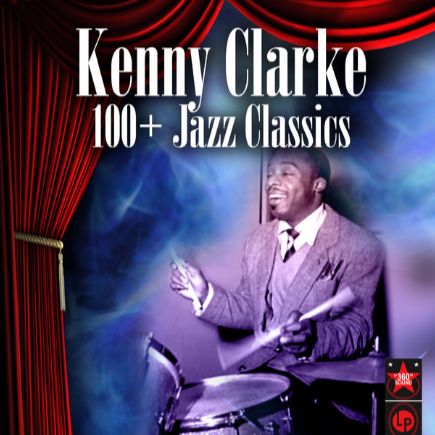Kenny Clarke: l’inventeur du tempo moderne
Pionnier du rythme moderne dans le jazz, Kenny Clarke s’impose comme l’un des architectes du bebop et une figure incontournable de la batterie au XXe siècle. Né en 1914 à Pittsburgh, il bouleverse les codes de l’accompagnement rythmique en remplaçant la pulsation continue de la grosse caisse par une conduite plus légère et interactive à la cymbale ride, libérant ainsi les autres éléments de sa batterie pour dialoguer avec les solistes. Cette approche révolutionnaire fera de lui l’un des artisans du son nouveau apparu dans les clubs de Harlem au début des années 1940.
Surnommé ‘Klook’, Kenny Clarke débute avec Roy Eldridge en 1935, puis parcourt l’Europe avec le groupe d’Edgar Hayes avant de retrouver la scène new-yorkaise, où il joue un rôle central dans les jam sessions du Minton’s Playhouse. En compagnie de Charlie Parker, Dizzy Gillespie, Thelonious Monk et Charlie Christian, il participe activement à l’émergence du bebop. Son jeu nerveux, articulé et inventif transforme la batterie en un instrument à part entière, capable de répondre, ponctuer, relancer.
Kenny Clarke est également associé à l’esthétique du cool jazz, notamment à travers sa collaboration avec Miles Davis et John Lewis. Avec ce dernier, il fonde en 1952 le Modern Jazz Quartet, dont il reste membre jusqu’en 1955. Cette formation alliant swing et influences classiques impose un style raffiné, à la fois élégant et rigoureux, dans lequel Clarke déploie un jeu subtil, à la fois précis et discret.
Installé en France dès les années 1950, il devient un pilier de la scène jazz parisienne, collaborant avec Bud Powell, Django Reinhardt, Martial Solal ou encore Claude Bolling, avec qui il crée un big band inspiré de celui de Thad Jones et Mel Lewis. Sa carrière européenne le voit aussi aux côtés de Louis Armstrong, Ella Fitzgerald, Sidney Bechet ou Benny Carter, preuve de sa grande adaptabilité et de son immense talent.
Kenny Clarke a influencé plusieurs générations de batteurs par sa capacité à allier souplesse, invention rythmique et sens aigu du collectif. Véritable bâtisseur de langage, il a transformé la batterie en un moteur expressif au cœur du jazz moderne.
Kenny Clarke: el inventor del tempo moderno
Pionero del ritmo moderno en el jazz, Kenny Clarke se impone como uno de los arquitectos del bebop y una figura esencial de la batería en el siglo XX. Nacido en 1914 en Pittsburgh, revolucionó los códigos del acompañamiento rítmico al sustituir el pulso constante del bombo por una conducción más ligera e interactiva en el plato ride, liberando así los otros elementos de la batería para dialogar con los solistas. Este enfoque revolucionario lo convirtió en uno de los artífices del nuevo sonido surgido en los clubes de Harlem a principios de los años cuarenta.
Apodado ‘Klook’, Kenny Clarke debutó con Roy Eldridge en 1935, luego recorrió Europa con el grupo de Edgar Hayes antes de regresar a la escena neoyorquina, donde desempeñó un papel central en las jam sessions del Minton’s Playhouse. Junto a Charlie Parker, Dizzy Gillespie, Thelonious Monk y Charlie Christian, participó activamente en el nacimiento del bebop. Su forma de tocar, nerviosa, articulada e inventiva, transformó la batería en un instrumento de pleno derecho, capaz de responder, puntuar y relanzar el discurso musical.
Kenny Clarke también está vinculado a la estética del cool jazz, en particular gracias a su colaboración con Miles Davis y John Lewis. Con este último fundó en 1952 el Modern Jazz Quartet, del que fue miembro hasta 1955. Esta formación, que combinaba swing e influencias clásicas, impuso un estilo refinado, a la vez elegante y exigente, donde Clarke desplegaba un enfoque sutil, preciso y contenido.
Instalado en Francia desde los años cincuenta, se convirtió en una figura clave de la escena jazzística parisina, colaborando con Bud Powell, Django Reinhardt, Martial Solal y Claude Bolling, con quien formó una big band inspirada en la de Thad Jones y Mel Lewis. Su carrera europea lo llevó también a actuar con Louis Armstrong, Ella Fitzgerald, Sidney Bechet y Benny Carter, demostrando su gran versatilidad y talento.
Kenny Clarke influyó en varias generaciones de bateristas gracias a su capacidad para combinar flexibilidad, invención rítmica y sentido del colectivo. Verdadero constructor de lenguaje, transformó la batería en un motor expresivo en el corazón del jazz moderno.
Kenny Clarke: l’inventore del tempo moderno
Pioniere del ritmo moderno nel jazz, Kenny Clarke è riconosciuto come uno degli architetti del bebop e una figura imprescindibile della batteria del XX secolo. Nato a Pittsburgh nel 1914, ha rivoluzionato i codici dell’accompagnamento ritmico sostituendo il battito continuo della grancassa con una conduzione più leggera e interattiva sul piatto ride, liberando così gli altri elementi della batteria per dialogare con i solisti. Questo approccio rivoluzionario lo ha reso uno degli artefici del nuovo suono nato nei club di Harlem all’inizio degli anni ’40.
Soprannominato « Klook », Kenny Clarke esordì con Roy Eldridge nel 1935, poi girò l’Europa con il gruppo di Edgar Hayes prima di tornare sulla scena newyorkese, dove ebbe un ruolo centrale nelle jam session del Minton’s Playhouse. Accanto a Charlie Parker, Dizzy Gillespie, Thelonious Monk e Charlie Christian, partecipò attivamente alla nascita del bebop. Il suo stile nervoso, articolato e inventivo trasformò la batteria in uno strumento pienamente espressivo, capace di rispondere, sottolineare e rilanciare.
Kenny Clarke fu anche associato all’estetica del cool jazz, in particolare grazie alla collaborazione con Miles Davis e John Lewis. Con quest’ultimo fondò nel 1952 il Modern Jazz Quartet, di cui fece parte fino al 1955. Il gruppo, che univa swing e influenze classiche, impose uno stile raffinato, elegante e rigoroso, dove Clarke esprimeva un gioco sottile, preciso e discreto.
Stabilitosi in Francia negli anni ’50, diventò una figura di spicco della scena jazz parigina, collaborando con Bud Powell, Django Reinhardt, Martial Solal e Claude Bolling, con cui creò una big band ispirata a quella di Thad Jones e Mel Lewis. La sua carriera europea lo vide anche al fianco di Louis Armstrong, Ella Fitzgerald, Sidney Bechet e Benny Carter, a testimonianza della sua grande versatilità e del suo talento straordinario.
Kenny Clarke ha influenzato generazioni di batteristi grazie alla sua capacità di unire flessibilità, invenzione ritmica e senso collettivo. Vero costruttore di linguaggio, ha trasformato la batteria in un motore espressivo al centro del jazz moderno.
Kenny Clarke: the inventor of the modern tempo
A pioneer of modern jazz rhythm, Kenny Clarke stands as one of the key architects of bebop and a defining figure in 20th-century drumming. Born in 1914 in Pittsburgh, he revolutionized rhythmic accompaniment by shifting the steady pulse of the bass drum to a lighter, more interactive ride cymbal pattern, freeing the rest of the drum set to engage directly with soloists. This radical approach made him one of the founding forces behind the new sound emerging in Harlem clubs during the early 1940s.
Nicknamed “Klook,” Clarke began his career with Roy Eldridge in 1935 and toured Europe with Edgar Hayes’ band before returning to New York. There, he became a central figure in the jam sessions at Minton’s Playhouse. Alongside Charlie Parker, Dizzy Gillespie, Thelonious Monk, and Charlie Christian, he played a key role in shaping bebop. His drumming—nervy, articulate, and inventive—recast the drums as a full-fledged voice, able to respond, accent, and propel the music forward.
Clarke also helped define the cool jazz aesthetic, particularly through collaborations with Miles Davis and John Lewis. In 1952, he co-founded the Modern Jazz Quartet with Lewis, remaining in the group until 1955. The MJQ, blending swing with classical influences, established a refined style in which Clarke’s playing was subtle, precise, and always tasteful.
Relocating to France in the 1950s, he became a central figure in the Paris jazz scene, performing with Bud Powell, Django Reinhardt, Martial Solal, and Claude Bolling, with whom he formed a big band inspired by Thad Jones and Mel Lewis. His European career also included appearances with Louis Armstrong, Ella Fitzgerald, Sidney Bechet, and Benny Carter—testimony to his adaptability and enduring artistry.
Kenny Clarke influenced generations of drummers through his unique ability to combine flexibility, rhythmic innovation, and deep musical empathy. A true builder of musical language, he transformed the drum set into an expressive engine at the heart of modern jazz.

Autres articles – Otros artículos – Altri articoli
Louis ARMSTRONG (04.08.1901–06.07.1971)
Sidney BECHET (14.05.1897–14.05.1959)
Claude BOLLING (10.04.1930–29.12.2020)
Benny CARTER (08.08.1907–12.07.2003)
Charlie CHRISTIAN (29.07.1916–02.03.1942)
Miles DAVIS (26.05.1926–28.09.1991)
Roy ELDRIDGE (30.01.1911–26.02.1989)
Ella FITZGERALD (25.04.1917–15.06.1996)
Dizzy GILLESPIE (21.10.1917–06.01.1993)
Coleman HAWKINS (21.11.1904–19.05.1969)
Thad JONES (28.03.1923–20.08.1986)
Mel LEWIS (10.05.1929–02.02.1990)
Thelonious MONK (10.10.1917–17.02.1982)
Charlie PARKER (29.08.1920–12.03.1955)
Bud POWELL (27.09.1924–31.07.1966)
Django REINHARDT (23.01.1910–16.05.1953)
Styles de jazz – Estilos de jazz – Stili di jazz – Jazz Styles
If You Could See Me Now–07.05.1946–Sarah VAUGHAN
Turnpike–22.06.1953–Jay Jay JOHNSON
I’ll Remember April–16.06.1955–Carmen McRAE
It Don’t Mean A Thing–21.07.1955–Thelonious MONK
It Don’t Mean A Thing–17.06.1957–Sidney BECHET & Martial SOLAL


